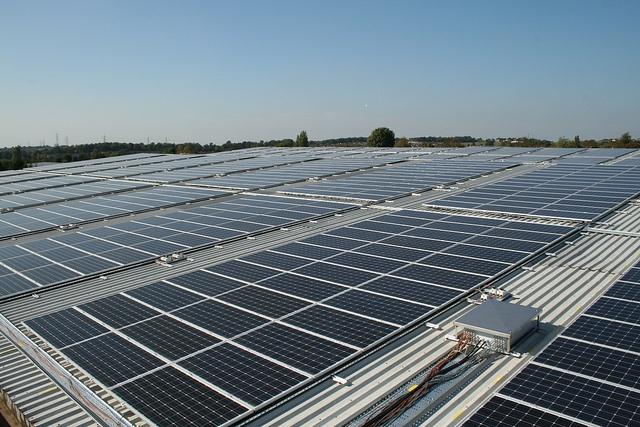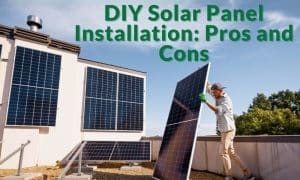Rooftop solar power has emerged as a critical element in Australia’s journey towards achieving its 2030 renewable energy target. While challenges loom on the path to this goal, a coordinated approach, as proposed in the Nexa Advisory report, can empower Australians to become active participants in the clean energy revolution. By embracing rooftop solar and implementing the recommended strategies, Australia can meet its renewable energy targets and become a global clean energy leader.
Unleash the potential of solar battery storage! Are you ready to transform the way you power your business or household? Say goodbye to rising electricity costs and unpredictable energy grids. The state-of-the-art solar battery systems empower you to maximise energy efficiency, save money, and reduce your carbon footprint while enjoying an uninterrupted power supply.
Let us discuss and choose the best quote that suits your needs and budget, and we can connect you with our trusted local installers, who will provide up to 3 FREE quotes for your business solar and home battery system.
Understanding Distributed Energy Resources
Consumer-owned devices, known as distributed energy resources, or DERs, have the “smarts” to actively manage energy demand and generate or store electricity as distinct units.
These devices have enormous potential to exchange consumer value by contributing to a dependable and secure energy supply when aggregated and operated together at scale through microgrids and virtual power plants (VPPs).
DERs encompass diverse energy technologies integrated into the grid locally. These resources include, but are not limited to:
- Solar Photovoltaic (PV) Panels: Solar panels convert sunlight into electricity, enabling homeowners and businesses to generate electricity and reduce grid dependence.
- Wind Turbines: Small-scale wind turbines, commonly found in rural and coastal areas, capture wind energy to generate electricity.
- Battery Energy Storage Systems (BESS): Batteries store excess energy for use during periods of high demand or when renewable energy sources are not producing electricity.
- Combined Heat and Power (CHP) Systems: These systems simultaneously generate electricity and useful heat from a single energy source, increasing overall energy efficiency.
- Microgrids: Independent, localised energy grids that can operate autonomously or in conjunction with the main grid, enhancing energy resilience.
Examples of DER devices include:
- Rooftop solar photovoltaic (PV) units
- Wind-generating units (at residential or commercial premises)
- Battery storage system
- Heat pumps and pool pumps
- Smart appliances
- Electric vehicles
Attention, automobile enthusiasts! Are you prepared to embark on an electrifying journey with your next car? Brace yourself for a groundbreaking opportunity that will revolutionise your driving experience. Don’t miss out on this exclusive chance to book a test drive in one of the latest and most cutting-edge electric vehicles (EVs) available right in your very own neighbourhood!
So, what are you waiting for? Seize this moment to revolutionise your driving experience. Be a trendsetter, an innovator, and a protector of our planet. Book your test drive today and prepare to join the growing community of electric vehicle enthusiasts. The road to a sustainable and electrifying future awaits – don’t miss your chance to be part of it!
Nexa Advisory report
Australia’s ambitious 2030 renewable energy target is within reach, and a new report suggests that the key to achieving this lies in the widespread adoption of rooftop solar. With a federal target of 82% renewables in the National Electricity Market (NEM) by 2030, the government must explore innovative approaches to meet this goal, as it still needs concrete policy mechanisms.
Rooftop solar, already a powerful force in the energy landscape, offers a significant opportunity. A report from Nexa Advisory proposes establishing a National Distributed Energy Resources (DER) Policy and Coordination Office to consolidate the fragmented efforts of states and companies. By harnessing the growing number of Australians participating in rooftop solar, this approach can facilitate the transition to clean energy.
Nexa Advisory’s CEO and founder, Stephanie Bashir, emphasises that Australia’s clean energy transition has faced obstacles. While significant funds have been allocated to initiatives like Rewiring the Nation, the challenge lies in constructing new large-scale renewable generation, batteries and the necessary transmission infrastructure to deliver clean energy to consumers. Obstacles such as vested interests and ineffective community engagement hinder progress, and the solution, according to Bashir, is to empower the people.
As per the Clean Energy Council, rooftop solar is already making a considerable impact, representing 25% of the grid’s installed capacity. It frequently supplies nearly half of the NEM’s midday generation peaks, and, notably, in South Australia, it met all energy demand on one Saturday afternoon in September. Read more about Rooftop Solar Continues to Lead Australia’s Renewable Energy Transition.

Are you tired of being the last to know about renewable energy updates? Did you miss out on a state rebate or incentive? Looking to find out more about how you can save on your utility bills? Subscribe to Energy Matters’ weekly newsletter and keep updated with Australian and international news, incentives, and offers.
Nexa Advisory’s summary of recommendations
To integrate rooftop solar into the national grid effectively, the Nexa Advisory report outlines five key recommendations:
- Establish a National Distributed Energy Resources (DER) Policy and Coordination Office to provide strategic direction.
- Encourage innovation in distribution network tariff design, emphasising flexibility and utilising existing rooftop capacity before constructing new infrastructure.
- Support low-income individuals and renters to ensure equitable access to rooftop solar benefits.
- Open network operations data to identify the need for new infrastructure, such as community batteries, and reduce the control of data by Network Service Providers.
- Impose a national 230V voltage standard, making Distributed Network Service Providers operate networks at a lower standard, enabling greater rooftop solar PV capacity.
While large-scale renewables face regulatory complexities, slow approval processes, and logistical issues, DER stands out, aligning with the growth rates required to reach the 2030 target. Australia’s technological advancements offer opportunities to tap into the commercial and industrial sector’s untapped rooftop solar potential.
However, barriers to full DER utilisation exist, notably the public’s need for more trust in Distributed Network Service Providers (DNSPs). To maximise the value of DER for both owners and the power system, flexibility through demand response should be incorporated into the National Electricity Market’s design.
Source: AEMO, Nexa Advisory

Why rooftop solar is key to Australia's renewables target
Rooftop solar is key to Australia’s renewables target for several reasons:
- It is a decentralised energy source, meaning it can be generated close to where it is consumed. This reduces the need for new transmission and distribution infrastructure.
- It is a clean and renewable energy source, which helps reduce Australia’s greenhouse gas emissions.
- It is becoming increasingly affordable, with the cost of solar panels having fallen significantly in recent years.
- It is popular with Australian households and businesses, with over 2.7 million solar systems installed nationwide.
Benefits of rooftop solar
Rooftop solar offers many benefits to households and businesses, including:
- Reduced electricity bills: Rooftop solar can generate electricity at a fraction of the cost of grid-sourced electricity. This can save households and businesses hundreds of dollars per year on their electricity bills.
- Increased energy independence: Rooftop solar can help households and businesses to become more energy independent. This means they are less reliant on the grid and more resilient to power outages.
- Reduced environmental impact: Rooftop solar is a clean and renewable energy source, which helps reduce greenhouse gas emissions and other pollutants.
How to get started with rooftop solar
If you are interested in getting started with rooftop solar, there are a few things you need to do:
- Get a solar assessment: This will help you to determine how much solar power you need and how much it will cost.
- Choose a solar installer: There are many different solar installers. It is important to do your research and choose a reputable installer.
- Apply for relevant rebates or incentives: Several rebates and incentives are available for rooftop solar installations. Check with your local government and the Clean Energy Council for more information.
- Get your solar system installed: Once you have chosen a solar installer, they will schedule a time to install it. The installation process typically takes one to two days.
Overall, rooftop solar is a win-win for Australia. It is a clean, affordable, and reliable source of energy that can help the country achieve its renewable energy target and reduce its greenhouse gas emissions.
Still can’t afford to switch to solar power?
Are you considering getting solar panels but are currently short on funds? You can still invest wisely, and Energy Matters can help you.
Powow and Energy Matters have teamed up to provide consumers with an alternative to switching to solar power and battery storage.
The biggest obstacle to installing solar and battery storage is typically finance. With Powow’s PPA and VPP, our customers will have a $0 upfront option and financial stability in the uncertain energy market.
Get up to 3 obligation-free quotes by getting in touch with us right away. Find out what payment plan options suit your needs and budget!













































